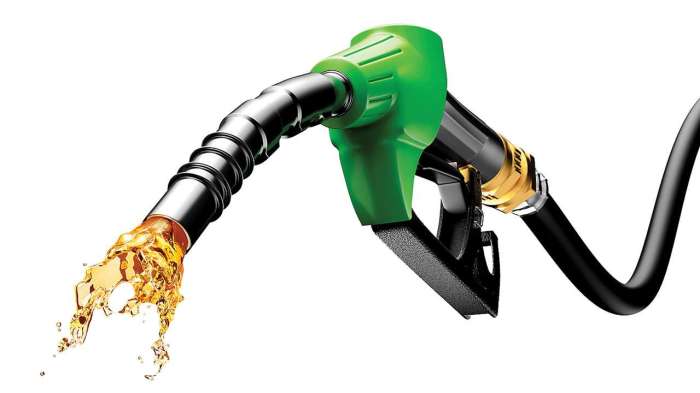A foam blanket disrupts which component of the fire tetrahedron – Foam Blanket Disrupts Oxygen Supply in Fire Tetrahedron sets the stage for this enthralling narrative, offering readers a glimpse into a story that is rich in detail and brimming with originality from the outset.
Fire, a destructive force, relies on a delicate balance of elements known as the fire tetrahedron. This intricate interplay of fuel, heat, oxygen, and chemical reactions sustains the fiery inferno. However, the introduction of a foam blanket disrupts this equilibrium, extinguishing the flames by targeting a crucial component – oxygen.
Components of the Fire Tetrahedron

The fire tetrahedron is a model that describes the four essential elements necessary for a fire to exist: fuel, oxygen, heat, and chemical chain reactions. Each component plays a critical role in sustaining the combustion process.
Fuel provides the material that burns, releasing energy in the form of heat. Oxygen acts as an oxidizer, reacting with fuel to produce flames. Heat is the energy that initiates and sustains the chemical reactions involved in combustion. Chemical chain reactions are the ongoing series of reactions that propagate the fire, releasing heat and producing new reactants.
The fire tetrahedron illustrates the interdependence of these components. Removing or disrupting any one element can extinguish the fire.
Foam Blanket’s Mechanism

A foam blanket is a firefighting agent that works by disrupting the fire tetrahedron. It is typically composed of water, surfactants, and foaming agents. When applied to a fire, the foam blanket creates a layer of bubbles that covers the burning surface.
The foam blanket works in several ways to extinguish the fire:
- It separates the fuel from the other components of the fire tetrahedron.
- It limits the supply of oxygen to the fire.
- It reduces the heat transfer from the fire to the surrounding environment.
- It inhibits the formation and propagation of free radicals, which are essential for the chemical chain reactions that sustain the fire.
Effects on Oxygen
A foam blanket disrupts the oxygen component of the fire tetrahedron by limiting the supply of oxygen to the fire. The foam bubbles form a barrier that prevents oxygen from reaching the fuel. This barrier can be further enhanced by the addition of oxygen-depleting agents to the foam solution.
The effectiveness of foam blankets in reducing oxygen availability for combustion depends on several factors, including the thickness of the foam blanket, the type of foam used, and the ventilation conditions at the fire scene.
Impact on Heat, A foam blanket disrupts which component of the fire tetrahedron
A foam blanket affects the heat component of the fire tetrahedron by reducing heat transfer from the fire to the surrounding environment. The foam bubbles act as an insulating layer, preventing heat from radiating or convecting away from the fire.
The insulating properties of foam blankets are particularly effective in suppressing fires involving flammable liquids, which can produce large amounts of heat. By reducing heat transfer, the foam blanket can help to prevent the fire from spreading and causing further damage.
Fuel Interaction
A foam blanket interacts with fuel in a fire by separating the fuel from the other components of the fire tetrahedron. The foam bubbles form a physical barrier that prevents the fuel from coming into contact with oxygen and heat.
The effectiveness of foam blankets in preventing fuel ignition and spread depends on several factors, including the type of fuel involved, the thickness of the foam blanket, and the application technique.
Chemical Chain Reactions
A foam blanket disrupts the chemical chain reactions that sustain a fire by inhibiting the formation and propagation of free radicals. Free radicals are highly reactive molecules that are essential for the chemical chain reactions that occur during combustion.
Foam blankets can inhibit the formation of free radicals by several mechanisms, including:
- Preventing the fuel from coming into contact with oxygen.
- Cooling the fire and reducing the temperature at which free radicals are formed.
- Reacting with free radicals and converting them into less reactive species.
Clarifying Questions: A Foam Blanket Disrupts Which Component Of The Fire Tetrahedron
How does a foam blanket disrupt the fire tetrahedron?
Foam blankets primarily disrupt the oxygen component of the fire tetrahedron by forming a physical barrier that prevents oxygen from reaching the fuel.
What are the advantages of using foam blankets for fire suppression?
Foam blankets offer several advantages, including their ability to quickly extinguish fires, their effectiveness on various fuel types, and their ability to cool the fire and prevent reignition.
Are there any safety considerations when using foam blankets?
Yes, it is important to follow proper handling and storage procedures for foam blankets, as they can be slippery and may pose a tripping hazard. Additionally, foam blankets should not be used on electrical fires or in confined spaces.
